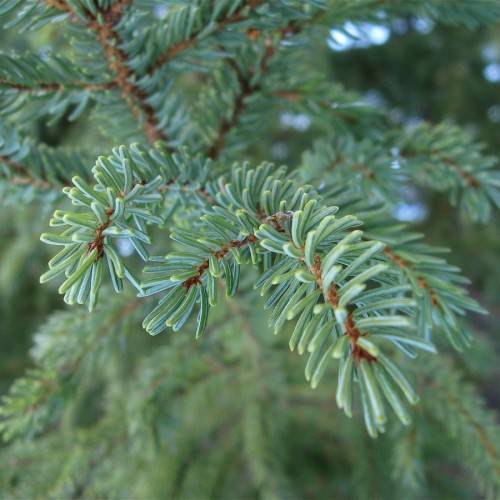
Canadian hemlock
Tsuga canadensis 'Green Spider'
Also Known As - eastern hemlockCycle:
Perennial
Watering:
Average
Hardiness Zone:
3 - 7
Flowers:
Flowers In Spring
Sun:
Deep shade, Filtered shade, Full sun only if soil kept moist, Part sun/part shade
Soil:
Sandy Loamy Clay
Cones:
Yes
Leaf:
Yes
Growth Rate:
Moderate
Maintenance:
Low
Care Level:
Medium
watering
Canadian hemlock should be watered regularly to ensure optimal growth. During the growing season, the Canadian hemlock should be watered deeply once every 7-10 days. During the peak of the growing season when temperatures are consistently above 75-80 degrees, water more frequently, once every 5-7 days. In the winter, water sparingly, approximately every 2 weeks. To ensure the soil remains consistently moist, keep a layer of organic material such as bark mulch around the base of the tree. This will help to reduce the frequency of watering.
sunlight
Canadian hemlock, or Tsuga canadensis 'Green Spider', is best suited for full sun or partial shade. The trees require at least 4 hours of direct sunlight per day, although 6 to 8 hours of sunlight is ideal. During the summer solstice, the Canadian hemlock should have more sunlight (up to 8 hours), while during the winter solstice, the plant should receive about 4 to 5 hours of sunlight. The exact amount of sunlight required of the Canadian hemlock will vary based on age, location, and outdoor temperature.
pruning
Pruning is an important part of maintaining the health of Canadian Hemlock trees. It can be done at any time but is best done in late winter or early spring, when the tree is still dormant but before new growth begins. Generally, pruning should be done to remove dead or damaged branches, to control the size of the tree, and to encourage thicker foliage. For Canadian Hemlocks, prune about a third of the tree’s total branch length, making sure to cut back the branches to a bud. Additionally, if the branches have become unusually dense, thinning them out may be necessary to allow better air circulation and light penetration into the interior.
